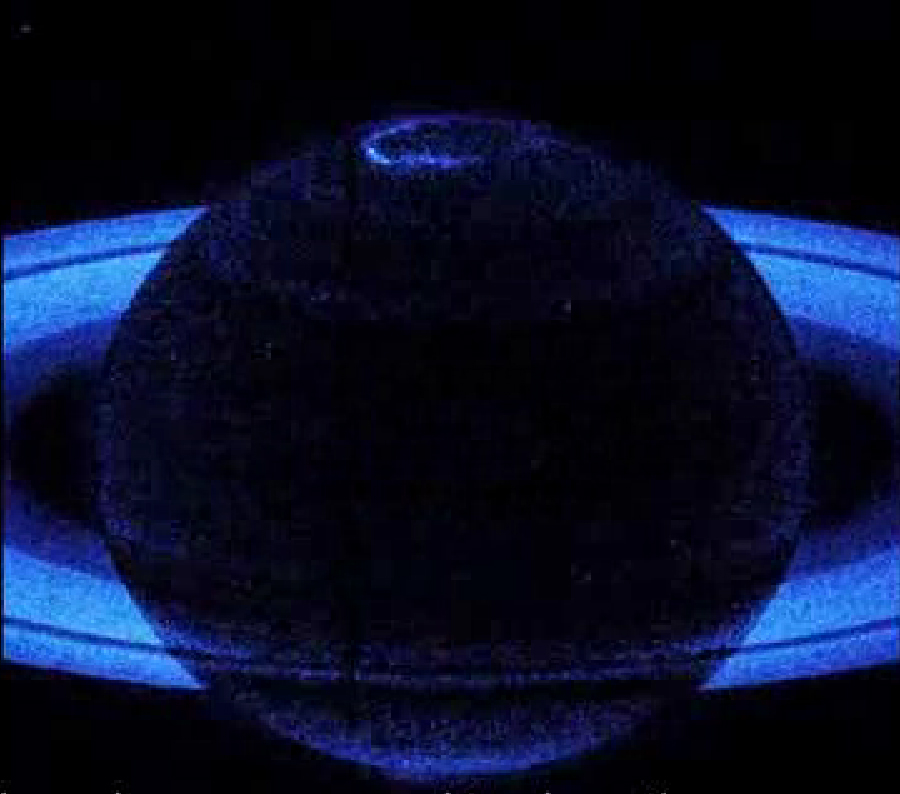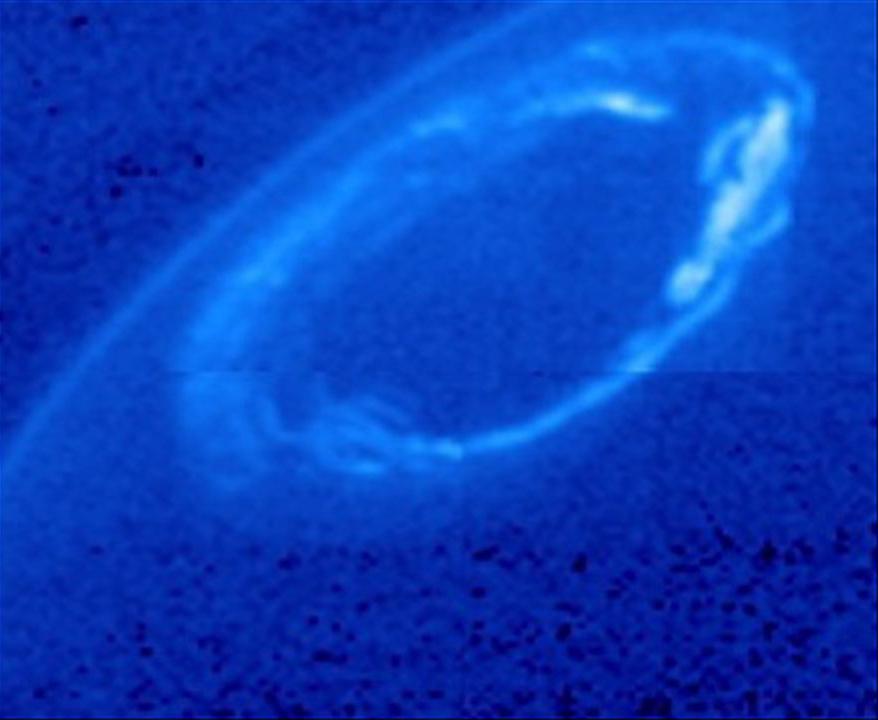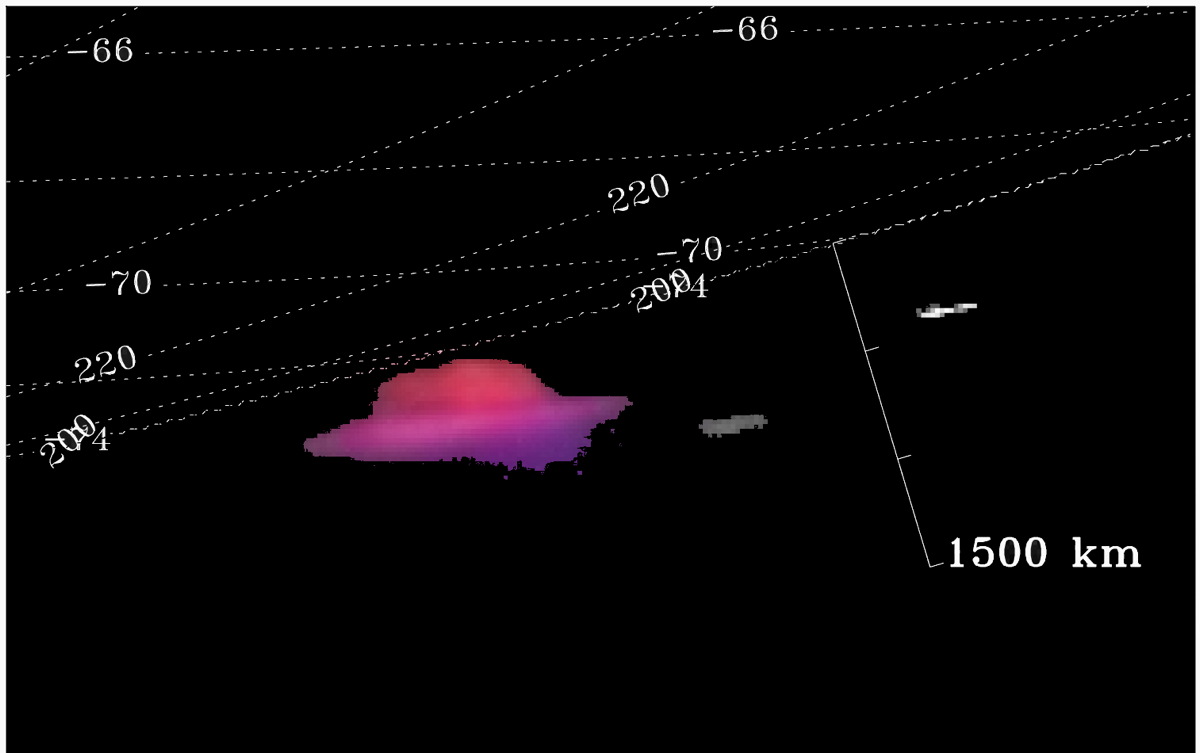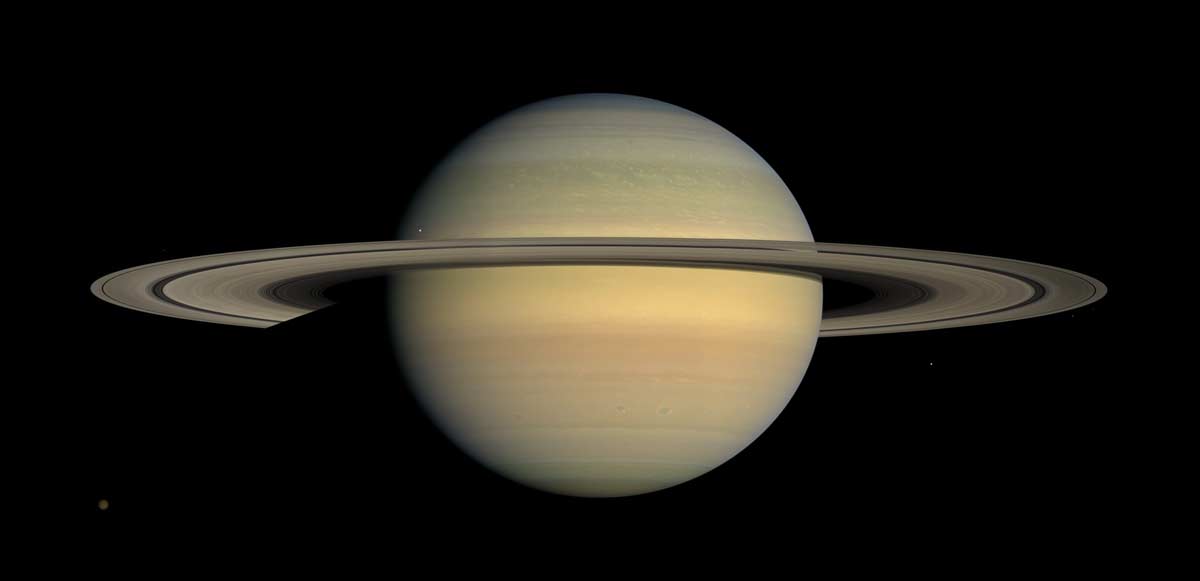Saturn's Auroras Glow in 360-Degree Views from NASA Spacecraft (Photos, Video)

Saturn's auroras dance in a new video that shows the ringed planet's northern and southern lights shining in amazing, 360-degree detail.
Scientists combined observations from NASA's Cassini spacecraft with views from the Hubble Space Telescope to create the new video of auroras on Saturn unveiled today (Feb. 11). The video shows multiple views of Saturn's auroras as they appear in different wavelengths of light.
The Cassini probe, which is currently orbiting Saturn, and the Hubble Space Telescope spotted Saturn's cosmic light shows in April and May 2013. By analyzing the data, scientists found that the aurora activity was caused by the solar wind. When charged particles carried away from the sun on the solar wind slam into Saturn's atmosphere, it can cause the celestial lights to glow at the planet's poles. [See amazing photos of Earth's auroras taken in 2014]
"Saturn's auroras can be fickle — you may see fireworks, you may see nothing," leader of the work on the Hubble images Jonathan Nichols of the University of Leicester in England, said in a statement. "In 2013, we were treated to a veritable smorgasbord of dancing auroras, from steadily shining rings to super-fast bursts of light shooting across the pole."

Saturn's northern and southern lights glow in red on the bottom and purple on top in visible light, according to Cassini photos. Earth's auroras are green on the bottom and red on top. The difference in color is due to variation in the dominant molecules of each planet's atmospheres. Nitrogen and oxygen are prevalent in Earth's auroras, while Saturn's are composed of hydrogen, NASA officials said.
The Cassini and Hubble telescope photos give scientists a new look at how the sun affects the planet's auroras and how the lights move, NASA officials said in a statement.
"Scientists have wondered why the high atmospheres of Saturn and other gas giants are heated far beyond what might normally be expected by their distance from the sun," Sarah Badman, a Cassini visual and infrared mapping spectrometer team associate at Lancaster University, England, said in a statement. "By looking at these long sequences of images taken by different instruments, we can discover where the aurora heats the atmosphere as the particles dive into it and how long the cooking occurs."
Get the Space.com Newsletter
Breaking space news, the latest updates on rocket launches, skywatching events and more!

By analyzing the new images, scientists have also found more evidence that auroras can be created through new connections in magnetic field lines. In one part of the new video, a bright part of the aurora moves in time with the position of Saturn's moon Mimas, NASA officials said. Earlier images have also shown that a bright aurora spot could be associated with the moon Enceladus, NASA officials added.
"This is our best look yet at the rapidly changing patterns of auroral emission," Wayne Pryor, a Cassini co-investigator at Central Arizona College in Arizona, said in a statement. "Some bright spots come and go from image to image. Other bright features persist and rotate around the pole, but at a rate slower than Saturn's rotation."

Scientists are still combing through data collected during the 2013 auroras. A group of scientists are analyzing ground-based data gathered at the Keck Observatory in Hawaii and NASA's Infrared Telescope Facility to piece together an even more comprehensive view of the aurora events on Saturn between April and May of 2013, NASA officials said.
"The auroras at Saturn are some of the planet's most glamorous features – and there was no escaping NASA's paparazzi-like attention”, said Marcia Burton, a Cassini fields and particles scientist at NASA's Jet Propulsion Laboratory, Pasadena, Calif., who is helping to coordinate these observations. "As we move into the part of the 11-year solar cycle where the sun is sending out more blobs of plasma, we hope to sort out the differences between the effects of solar activity and the internal dynamics of the Saturn system."
Follow Miriam Kramer @mirikramer and Google+. Follow us @Spacedotcom, Facebook and Google+. Original article on Space.com.
Join our Space Forums to keep talking space on the latest missions, night sky and more! And if you have a news tip, correction or comment, let us know at: community@space.com.

Miriam Kramer joined Space.com as a Staff Writer in December 2012. Since then, she has floated in weightlessness on a zero-gravity flight, felt the pull of 4-Gs in a trainer aircraft and watched rockets soar into space from Florida and Virginia. She also served as Space.com's lead space entertainment reporter, and enjoys all aspects of space news, astronomy and commercial spaceflight. Miriam has also presented space stories during live interviews with Fox News and other TV and radio outlets. She originally hails from Knoxville, Tennessee where she and her family would take trips to dark spots on the outskirts of town to watch meteor showers every year. She loves to travel and one day hopes to see the northern lights in person. Miriam is currently a space reporter with Axios, writing the Axios Space newsletter. You can follow Miriam on Twitter.









